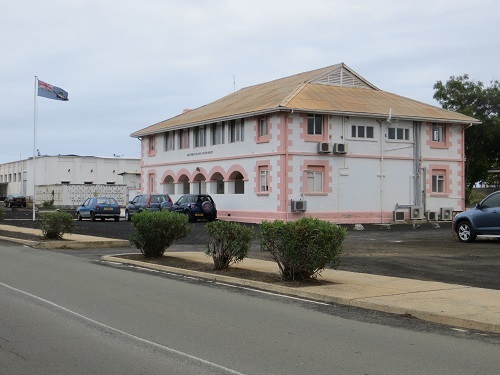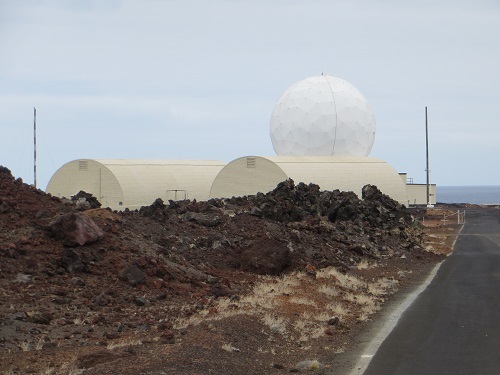A 34-square-mile speck of 44 lava, ash and cinder cones lost in the middle of the South Atlantic, eight degrees south of the Equator, 900 miles from Africa and 1,400 miles from South America, it would be harder to find a more remote get-away than Ascension Island.
That is unless you're also on your way to St. Helena some 800 miles south-east of Ascension, 1,200 miles from Africa and 2,000 miles from Brazil - or even further away from it all to Tristan Da Cunha, 1,250 miles below St. Helena and half way to the Antarctic Circle. 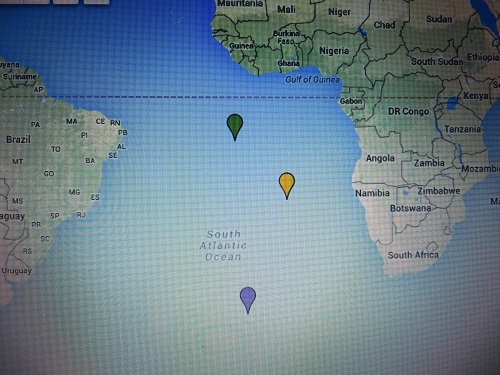
Green balloon is Ascension Island, yellow St. Helena, violet Tristan da Cunha
All three initially uninhabited specks now form a far-flung British Overseas Territory following the usual scuffles centuries earlier between the nascent Portuguese, Spanish, Dutch and British empires.
Ascension was first sighted by Portuguese navigator João da Nova in 1501 but it got its lasting name two years later when fellow countryman Afonso de Albuquerque spotted it on Ascension Day 1503.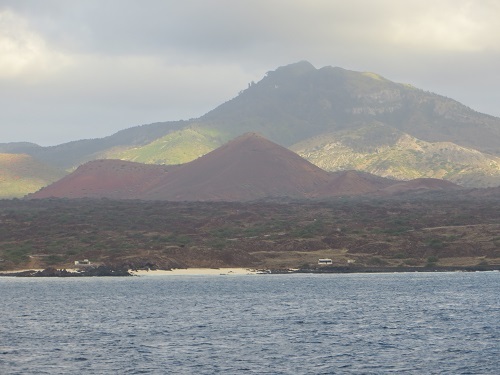
Ascension Island from the sea, near Georgetown 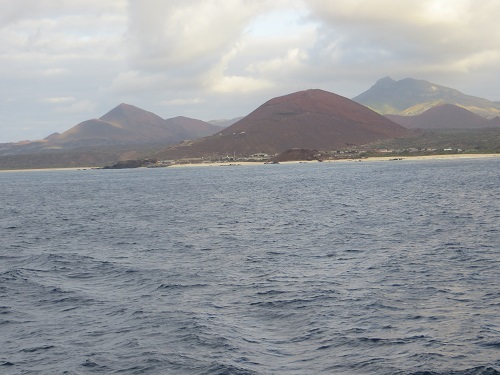
Another view
Over the centuries since, this remote but strategic rock has served as terminal isolation cell for an 18th century gay Dutch soldier, English garrison against Napoleon's attempts to escape from exile, supply depot for passing ships, burial ground for mariners felled by disease at sea, U.S. air base in WWII, major staging ground for U.K. forces to recapture the Falklands from Argentina in 1982, emergency landing strip for U.S. space shuttles, and major earth and space communications centre for the U.K., U.S. and Europe Union.
Today seriously seasoned travellers arrive either by twice-weekly RAF U.K.-Falklands flights, which allow 10 civilians on each plane, or by the last of the Royal Mail Ships to still ply a regular route, the RMS St. Helena, on its monthly run from Cape Town via St. Helena. They come for scuba diving in the brilliant tropical waters, to see marine, bird and land wild life, of for the mere heck of being on such a remote speck.
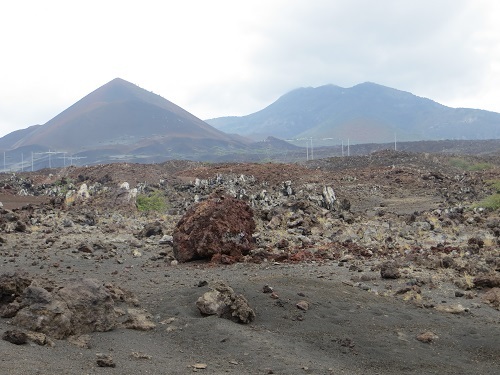
Typical lowland view
Arguably the first permanent human resident on the island was former Dutch East India Company soldier Leendert Hasenbosch, cast away here on May 5, 1725, after being convicted of sodomy aboard the company ship on which he served as bookkeeper. The following year British sailors found his tent and diary but no body, and it is assumed he either died of thirst or committed suicide - a somewhat different fate from today's gay-themed tours and cruises around the world.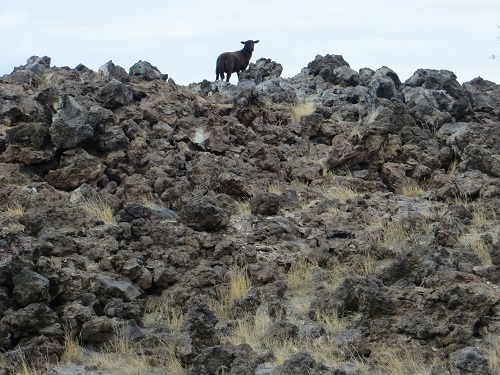
A scion of the sheep and goats brought in by the Spaniards and Portuguese to resupply ships with food
Today there are no local 'endemic' human residents, only a few dozen U.K. and U.S. servicemen working on the air base and hundreds of contract workers and personnel in related services - some 900 in all - who leave the island at the end of their services. 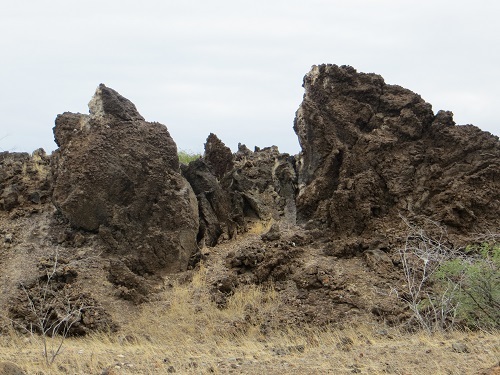
Lowland view
The tip of a 10,500-foot, 38-mile wide volcano soaring from the ocean floor to 2,800 feet above sea level, Ascension Island's prime raison d'être in the natural order of things in fact seems to be as a breeding ground for green turtles, whose coveted flesh for centuries pampered British royalty and London's Lord Mayors, and whose blood for a time slaked Hasenbosch's thirst, according to his diary.
Some 2,000 to 4,000 of them, now firmly protected by international law, are still estimated to nest here after travelling 1,400 miles from their habitat haunts off the coast of Brazil, miraculously homing in on the same golden sandy beaches where they themselves were born.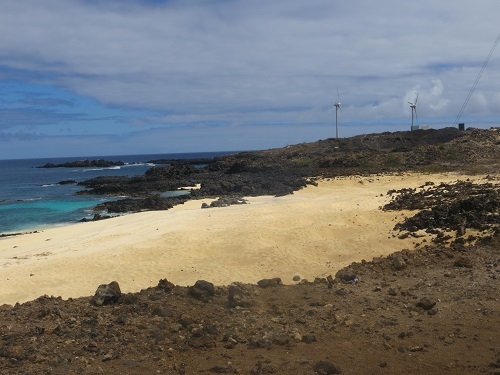
A turtle beach
Between December and June, after spending weeks mating off shore, the females dig deep nests in the sand where they lay up to six clutches of 120 eggs each, then swim off again, leaving the hatchlings to fend for themselves against land and sea predators as they seek to follow on the great trek westwards. The males never come ashore. 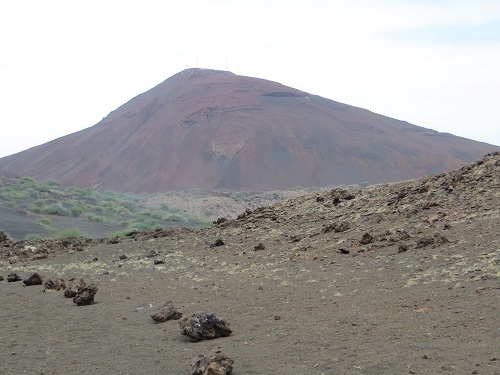
Island view
The first impression on approaching Georgetown, Ascension's tiny capital, from the sea is one of utter starkness, a huge reddish cinder cone called Cross Hill rising behind, a scattering of shrubs and low trees by its foot - but mainly black lava fields, jagged mounds of pumice, and lava boulders. The cone is meant to be dead, unlike a vent to the north that gushed with lava 100 years ago.
Looming up behind Georgetown - Cross Hill
Half way up the hill are four cannon, two big-bellied creatures dating from 1866, and two more modern pieces of war taken from HMS Hood when it was refitted in 1935 and set up here in 1941 to help drive away German U-boat U-124.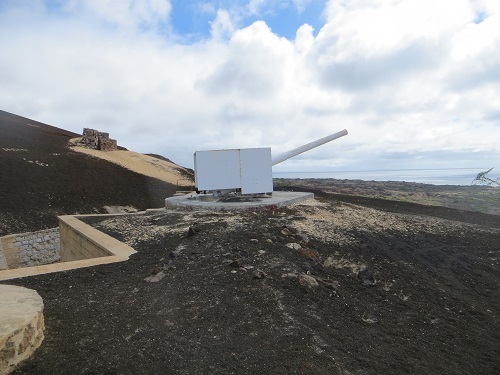
Cannon from HMS Hood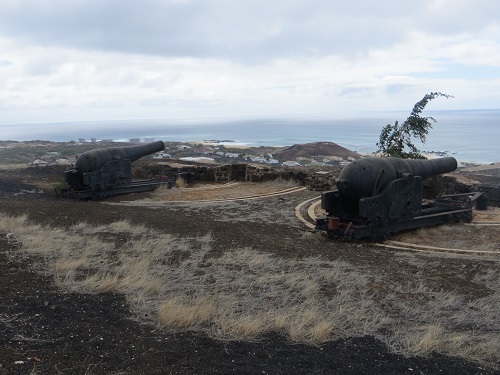
The Hood's doughty but tubby predecessors
Just north of Georgetown, gorgeous Long Beach spreads out its vast expanse of golden sand to a low ridge of sharp volcanic rock spires. But abandon any idea of swimming here - the undertow is far too powerful and dangerous. 
Long Beach
That's only for humans, however, for this is one of the green turtles' prime nesting grounds. On this day in late November the females are still not coming ashore. But the necks and snouts, emerging often in pairs, and the rearing shells, sometimes also in pairs, show that mating is well underway.
Beyond Long Beach is the trail to Comfortless Cove, and I'm assured that I can't get lost in this wasteland. Now the guys giving the assurances clearly don't know me. If there's one skill that I've mastered to perfection over the decades it is that of getting lost, especially when I'm told I can't do it. 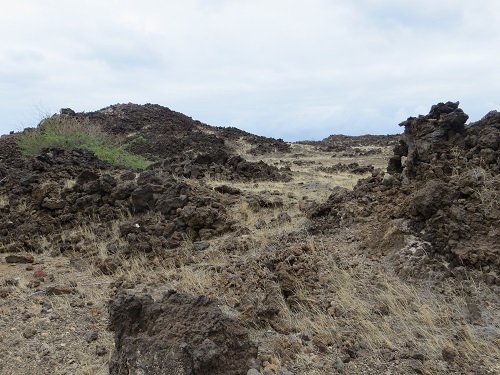
Trekking through the wasteland
Comfortless Cove used to be called Comfort Cove but got its new name after becoming the dropping off point for the 19th century fever ships where the dead and dying sailors found their final resting place. I take a right track as instructed and cross lava fields, scrub and jagged volcanic boulders.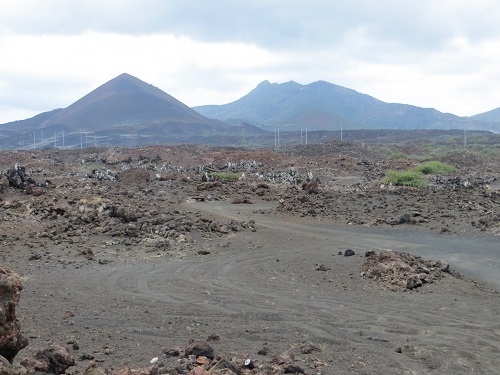
More volcanic wasteland
The dramatic triple humps of Green Mountain soar up on the right, flanked by another lofty cone. The wires and pylons of the BBC relay station crisscross the ground ahead, and one of the island's huge 'golf balls,' the white dome of a satellite station, dazzles on the left. Welcoming signs are affixed to the power line posts: 'Warning - radio frequency radiation hazard; Do not climb without permission of site leader.'
Bright white satellite 'golf ball'
Well, I have no intention of climbing a ruddy power pylon, but I can't find the way to the shore. Moving back through the lava boulders, I find a track leading to the sea. The blue Atlantic, foaming and frothing, rushes into a network of razor-sharp rock-bound coves and inlets - barren but beautiful.
Rock-bound coast
But my magisterial stroke of navigational genius has landed me up among aggressive thorn bushes on sharp precipitous volcanic needles. I'm totally lost amid the different but paradoxically identical looking scoria, scree, pumice and lava boulders.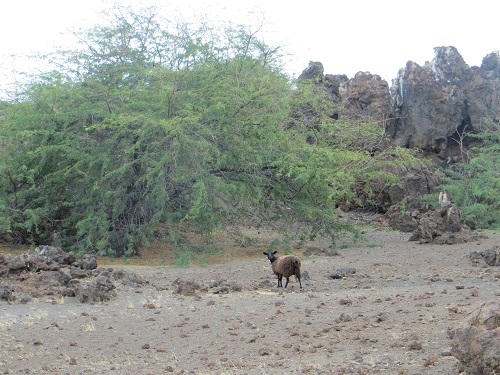
Lost - with a comely sheep
The bushes draw blood with nearly inch-long spikes for my impudent trespassing on their territory. Finally I find the path back to Georgetown.
'Gawd, why the hell didn't you take the sandy road by the side of the dome,' I'm informed.
So back to the sandy road, down it... and Eureka! With its small band of golden sand, its jagged, forbiddingly barren lava walls, and blue ocean breaking in lofty plumes of white foam against saw-toothed volcanic cliffs in the distance, it is starkly beautiful. 
Comfortless Cove
Up some steps and along a path with a couple of yellow flowering bushes breaking the hostile black monotone, a couple of dozen graves in a bowl-like crater with stone and wooden memorials mark the final resting place of these ancient mariners.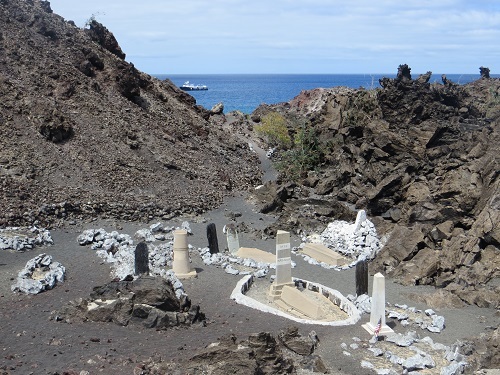
The cemetery of those who dies at sea of fever
It's called the Bonetta Cemetery after the ship on which deadly fever raged in 1838. But not all the dead came from that episode. The largest memorial is to 'Charles Baldwyn Ackland Dyke, Lieut. R.N., HMS Scout, 10 May 1837, A Beloved Son.' Another, to Harry Garland Harris, gives the cause of death, yellow fever, but the ship's name is chipped away. Only HMS Yipe... remains.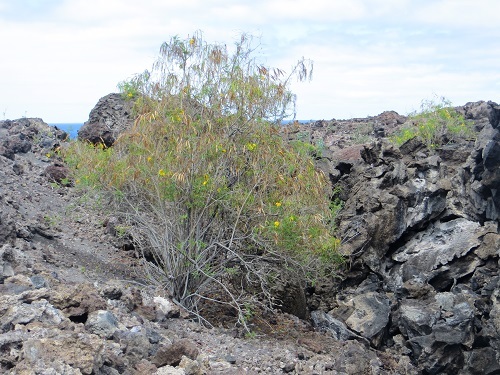
A yellow flower on the way
There's even a stone, and a small American flag, for 19-year-old L. Bayard Wilson of New York, who died while on the U.S. Flagship Constellation on June 2, 1861.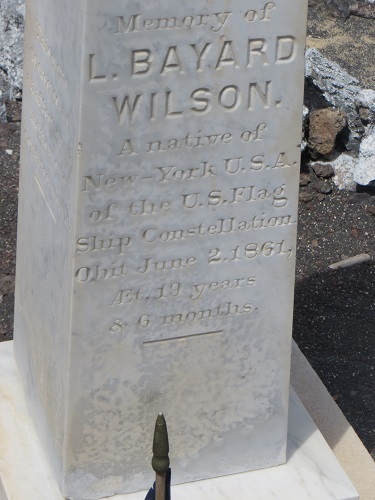
The American grave
But if you think Ascension Island is only stark volcanic rock, you could not be more wrong. For this is one place where human intervention has brought lush green gardens instead of the usual environmental degradation, as Green Mountain, and the next blog, will amply show.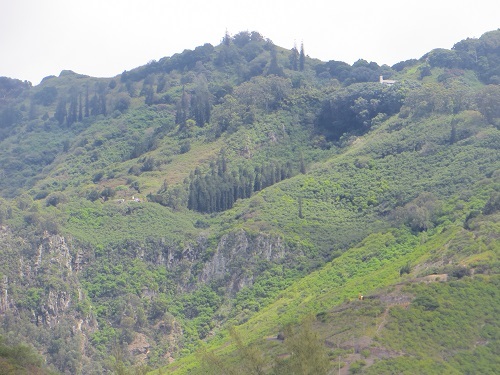
Green Mountain in all its lushness
______________
By the same author: Bussing The Amazon: On The Road With The Accidental Journalist, available with free excerpts on Kindle and in print version on Amazon.
And Swimming With Fidel: The Toils Of An Accidental Journalist, available on Kindle, with free excerpts here, and in print version on Amazon in the U.S here.
